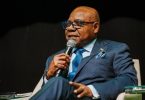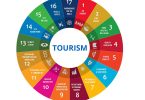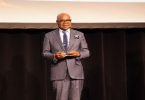Australia’s strained diplomatic relationship with China could further threaten already declining tourist numbers from a $2.2 billion market, with visitor numbers down as much as 80 per cent over the past three months after concerns over swine flu and the global recession.
Incoming tourist applications from China – Australia’s fastest-growing tourism market – have collapsed by up to 80 per cent over the past three months, putting in doubt a forecast jump in numbers from the country of 6.4 per cent this year. Travel operators in China’s main cities of Beijing, Shanghai, Shenzhen and Guangzhou said the primary reason for plunging numbers was swine flu – or A/H1N1 – which has also dramatically hit bookings from Japan and South Korea. Now there are potential repercussions from rising anti-Australian sentiment in China.
In June, arrivals of Chinese visitors were down 21 per cent compared with the same month last year, and total visitors from across northeast Asia fell 26 per cent.
By contrast, overall international arrivals for June declined by only 2 per cent, making a 5 per cent total decrease for the year to June compared with the previous year.
In Sydney yesterday, the Tan family enjoyed the unseasonably balmy weather and said they were unconcerned by the current rift in diplomatic relations between China and Australia.
Tan Xiangming and his wife, Jiang Hung, said although many potential tourists in China had been scared off by the threat of swine flu, they were not worried about the prospect of catching the disease in Australia and had ignored government warnings not to travel. Mr Tan said many Chinese tourists wanted to travel to European destinations that offered historical attractions, rather than exploring Australia’s natural attractions.
“I don’t know why more people don’t come to Australia – it has a lot of the top scenic spots in the world,” Mr Tan said.
Poor economic conditions have also been blamed for the downturn in Chinese arrivals. But tourism operators are fielding questions from customers concerned about Australian attitudes towards China after often-vicious attacks by the Chinese media on Australia in its state-owned press recently. The attacks have included accusations of Australia attempting to interfere in China’s legal system.
This follows a string of incidents that have soured diplomatic relations, led by controversy over the arrest of four Rio Tinto executives, including Australian Stern Hu, and capped off by Australia’s granting of a visa to Uighur leader Rebiya Kadeer, who has been branded a terrorist by the Chinese government following deadly riots in Xinxiang last month. Ms Kadeer has strongly denied the allegations.
China’s state-run media have also cited adverse coverage in the Australian press as evidence of anti-Chinese attitudes.
A senior manager for group tours at one of Beijing’s largest travel agencies, who did not want to be identified, said the extent of damage to Australia’s reputation as a tourist destination would depend on whether the Chinese government kept the Uighur issue in the media.
“The Rebiya Kadeer case is of particular concern for us,” the manager told The Australian. “Everyone knows the Vice-Minister of Foreign Affairs’ trip was cancelled because of that issue, and the government makes these decisions public so that the people take notice.” Another tour operator said customers had expressed concerns about travelling to Australia. “If you’ve never been to a country and all you know is the media reports on Rio Tinto and Rebiya Kadeer, then it’s understandable some people will feel uncomfortable,” the Chinese tour operator said.
“But if a customer has concerns about our relationship with Australia, I advise them not to go there. If you don’t feel comfortable, then you shouldn’t travel.”
Last year, 356,000 Chinese visited Australia, spending a total of $2.2 billion. In the four months to April this year, just prior to the first confirmed case of H1N1 influenza in Sydney, 166,300 Chinese visitors had entered Australia, a 6 per cent increase on the same period last year.
By May, as Australia became one of the first countries in the world to be hard hit by the fast-spreading virus, 30 to 50 per cent of bookings at agents in Beijing and Shanghai had been cancelled and some travel agencies were encouraging staff to take unpaid leave.
According to Tourism Australia’s latest Global Market Monitor report, published last week, the Chinese market went into decline about the middle of last
year following the catastrophic Sichuan earthquake. The Beijing Olympics following that kept many potential travellers at home.






















